To support the Airtripper Extuder Filament Force Sensor and other projects involving load cells, this article will cover some ideas in acquiring load cells and getting them ready for calibration. The article will cover the pros and cons of buying a bare load cell or buying electronic digital scales for the load cell inside. To finish off the article there are three electronic kitchen scale teardowns to reveal the load cells inside, and you will see how the scale enclosure & platform can be re-assembled for calibration purposes. A separate article will follow to cover load cell calibration.
You might think the best way to get a load cell unit is to buy it from Ebay. The obvious reason for this is that you know the dimensions of the load cell in advance and the price is, in most cases, cheaper than buying electronic digital kitchen scales for the load cell inside. However, buying the scales for the load cell inside has advantages because you get a ready made weighing platform for calibration and you’re able to test the load cell in advance with the scales manufacturer electronics.
If using load cells for the first time, it is important to note that you might not get the same resolution, accuracy or stability that you get with electronic digital scales. Microcontrollers such as the Arduinos are limited to a 10bit analog to digital converter and the higher the load cell rating the less resolution per 1kg you will get. The microcontrollers can’t read from the load cells directly so an instrumental amplifier is required. There will be more about this in the calibration article to follow.
Bare Load Cells Or Electronic Kitchen Scales
Unfortunately, just buying a bare load cell could make it difficult to calibrate without a suitable weighing platform and stand. Buying electronic scales for the load cell inside could provide a suitable weighing platform & stand for the load cell calibration. A weighing platform & stand could be custom designed and printed on a 3d printer or, with a few DIY tools, a platform could be made out of wood. However, depending on the type of load cell & application, the platform design will have to be strong enough to support the maximum calibration weight being tested. A calibration test load can be as much as 5kg or more and the weighing platform needs to be strong enough to support it.
Buying a bare Load Cell

5kg Load Cell Bought from Ebay
Bare load cells can be purchased from Ebay in a variety of load ratings and are usually described with full specifications. In order to make use of the load cells you may require a suitable weighing platform and stand for calibration depending on the application.
PROS
- You know the load cell dimensions in advance.
- The load cell can be cheaper than buying electronic kitchen scales.
- You can plan your designs with known dimensions while waiting for the delivery of the load cell. Also, other supporting fixtures can be ordered.
- A custom made calibration weighing platform can be adapted to fit different sizes of load cells.
CONS
- The weighing platform and stand will have to be custom made for calibration purposes.
- A custom made weighing platform and stand could add to the cost of the load cell.
- Ordering the load cell on its own means the rated load range can’t be tested in advance. Buying electronic scales will allow you to test the load cell inside in advance of removal.
Buying Electronic Scales For The Load Cell Inside
There are plenty of kitchen scales to choose from on Ebay but you may also get them at a good price from your local discount store. Using the discount store will give you a chance to inspect the scales before purchase to determine the approximate dimensions of the load cell inside, and returning the scales would be much easier after purchase.
PROS
- Digital kitchen scales could be bought cheaply from car boot sales or discount stores, or Ebay even.
- The Scales can be tested quickly after purchase or delivery.
- You have a ready made weighing platform and stand for calibration purpose.
- The kitchen scales can be used to test the weighing range of the load cell inside before adding custom electronics.
- The load cell wire assignments can easily be identified from the circuit board labels.
CONS
- The build quality of the cheapest electronic scales might not be strong enough to weigh loads up to the maximum load rating.
- The dimensions of the load cell inside the kitchen scales is unknown until after purchase and the enclosure is opened.
- You may find the load cell dimensions are not suitable for the application intended after opening the electronic kitchen scales enclosure.
- Buying electronic kitchen scales could cost more than buying just the load cell unit itself.
Digital Kitchen Scales Teardown For Load Cells
WH-B05 Electronic Digital Kitchen Scales
The WH-B05 electronic scale was purchased from Ebay and was available from more than one Supplier. It’s a very compact unit measuring approximately 16.3 x 12.8 x 3.5cm and has a 5kg load capacity. The build quality is good with a strong sturdy weighing platform and the scales can be had for less than a bare load cell unit.
The load cell inside is a very compact 5kg version and the smallest I’ve seen for the load rating. The scales base and weighing platform can be saved for calibrating the load cell with test weights of up to 5kg. For the smaller weight sensing projects these scale could be ideal.
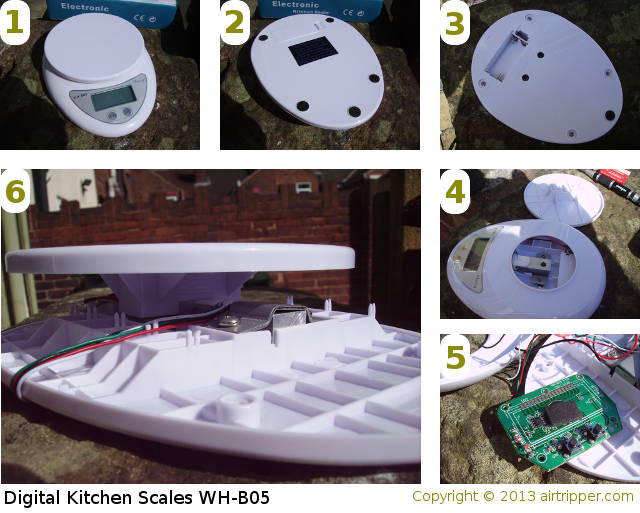

5kg Load Cell From WH-B05 Electronic Digital Scales
SF-400 Electronic Digital Kitchen Scales
This is another purchase from Ebay and this one has a load capacity of up to 10kg, the unit measures 24 x 17 x 3.5cm. I found the build quality to be too low for the 10kg load rating and there was some buckling in the weighing platform when tested with a 5kg load.
Getting a better quality scale of the same rating as the SF-400 will be a lot more expensive unless you can pick one up second hand. If you can make your own custom weighing platform & stand then buying a bare 10kg load cell could be a better option instead.
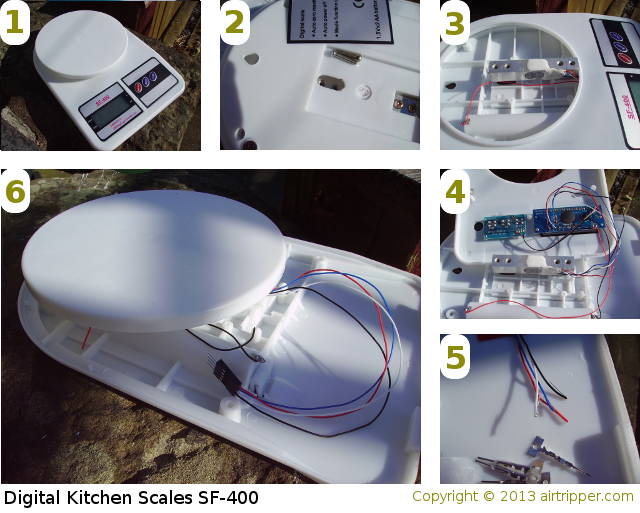

10kg Load Cell From SF-400 Electronic Digital Scales
KENWOOD DS800 Electronic Digital Kitchen Scales
The KENWOOD DS800 is a high quality digital kitchen scale with a more sophisticated and cleaner looking load cell inside. The glass weighing platform and the metal chassis ensures, when weighing, the maximum rated weight is kept steady and stable. These scales are now discontinued but found that they are sold under a new label; James Martin by Wahl ZX774 Digital Scales.
The load cell in these scales was used for the airtripper extruder filament force sensor prototype. The electronic scale is a bit expensive to buy just for the load cell inside but if you see one of these used going cheap, snap it up. The platform and chassis can easily be used to calibrate other load cells; like the bare ones sold on Ebay.
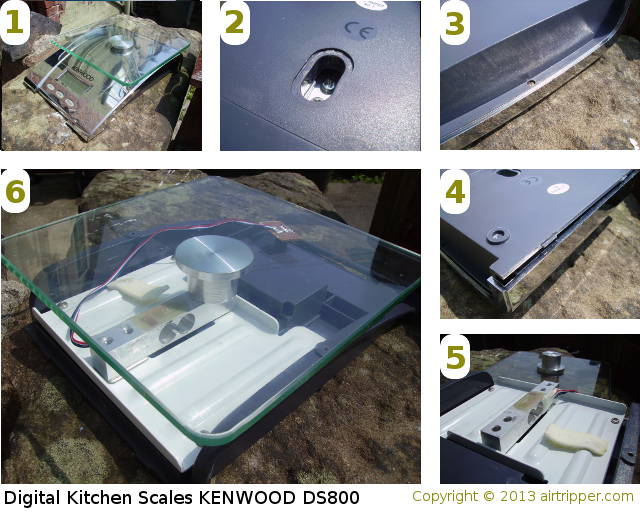

5kg Load Cell From KENWOOD DS800 Electronic Digital Scales
On closing
Load cells are one of my favourite sensors and I’ll be using them in a few projects I’ve got lined up. All the load cells in this article have been calibrated and tested successfully using an Arduino and an instrumental amplifier. I’m currently testing different load cells in preparation for the load cell calibration guide write-up. The OpenScad files for the Airtripper extruder filament force sensor will be edited to allow user configuration to fit variant load cell sizes.
Hope you enjoyed the Electronic Kitchen Scales Teardown Versus Load Cells.
[bodyadsrich1l]
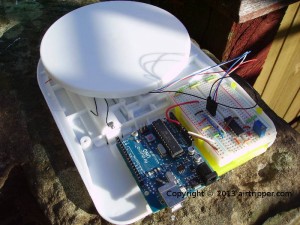
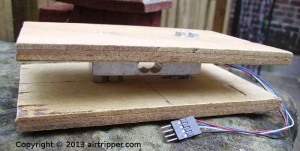
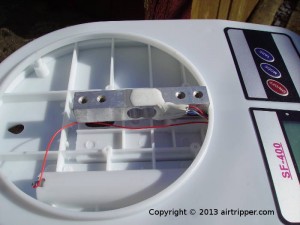

Stunning write up!
Searching for something like this quite a time. I am Trying to monitor filament movements optical, detecting slip in feed and retraction. Started a Google+ page under “eof cr lf”
Do you verify the extruder stepper instructions againts the measurements timeline?
Thank you.
The beauty of the force sensor is that you can use it alone and still get good information without the need for verification. However, a high resolution stepper motor encoder is planned because the information it will provide, with the force sensor, will be greatly expanded.
I think any sensor system for the extruder needs to report more than just errors because a good extruder hot end combination could make a potentially expensive sensor add-on mostly redundant.
That ADNS-9800 Optical Laser Sensor looks awesome and might provide a nice compact stepper encoder. It would be interesting to know if any type of filament has enough texture contrast for the laser sensor to work consistently. I’ve had experiences where the optical mouse has not worked properly on some surfaces.
https://www.tindie.com/products/jkicklighter/adns-9800-optical-laser-sensor/
Hi Mark,
Hope things are progressing well on the load sensor write-up; I’ve got a pink kitchen scale here and I’m ready to get under way.
Regards
William
Hi William,
The project turned out much bigger than realized – with the different elements involved. However, a lot of progress has been made, the model files are done and the write-up almost complete.
The software for calibrating the load cell was re-written from scratch to better suit the project. The software and the load cell electronics documentation will be drafted this week.
I’ve also drafted code to work with the small 1.8″ TFT mobile coloured screens. This is like the next stage of the project that allows real-time graphing without the need of a computer. It’s cheap and compact and currently on test on the 3d printer.
The project notes will be well worth the wait. You’ll need both Sli3er and Skeinforge to print the parts in case you need to get familiar.
Mark
Hi Mark,
I am interested in the force sensor you used. Since the filament is only 1.75 mm diameter, i guess that the sensor size must be very small. Is it a MEMS sensor? where did you install the sensor? Is it necessary and beneficial for the sensor to be able to withstand high temperature?
Thanks.
Harry
Hi Harry,
I use load cells for the sensor which are similar to the ones you see in this post. You can see how the load cell is installed in one of the pictures in this post:
http://airtripper.com/1338/airtripper-extruder-filament-force-sensor-introduction/
The load cell is used to measure the stepper motor effort during extrusion. The data from the sensor can then be formulated to provide a complete set of information without the need to collaborate with other sensors or data.
Errors like filament slips, stepper motor stalls, filament jamming, filament quality and bowden failure can all be detected just from the load sensor alone. A lot more analysis is possible and waiting to be explored, and will be demonstrated with new software being released shortly.
Thank you for your interest,
Mark
Hi Mark,
I’m currently looking for several low capacity load cells (1kg) which can measure both tension and compression for my university project. Do you know if the ones in the kitchen scale measure both ways or only compression and to what degree of accuracy? I’ve tried looking for it everywhere but it seems the kitchen scale is the easiest option to obtain one. Looking forward to your answer.
Thanks.
Hi Matt,
All the scales, and the load cell from Ebay, have been able to scale negative as well as positive. If you can find a scale locally, and it’s operational, you can just try pulling the scale platform from the base to check for negative readings.
You can order the load cells from Ebay, but I would try for scales at local shops which you might be able to test, bargain shops and markets are best places to start.
A 10bit A/D converter will give you between 1 and 2 grammes accuracy while a 12bit A/D converter will give you less than a gramme accuracy for a 1kg load cell. I’ve only worked with the INA125 and this chip probably wouldn’t work for you if you want to read both positive and negative from the load cell.
Mark
Hello,
I have worked a bit with a load cell, building my own pressure platform (see pictures here: http://www.flickr.com/photos/25468334@N08/sets/72157637376790655/)
However as I wanted something with a much lower height, I bought a kitchen scale and opened it (pictures here: http://www.flickr.com/photos/25468334@N08/sets/72157637373028495/).
There are four load cells in there, but as each of them has only three connectors, so firts it made me think they are of either half-bridge or quarter-bridge type. You can see on one picture that the four cell inputs on the PCB are labelled E+, S-, S+, E-. Usually, S means “sense” and E means “excite”. My conclusion: the cells are of quarter-bridge type and make a full bridge together.
Next step: connection of the sensors to an Arduino.